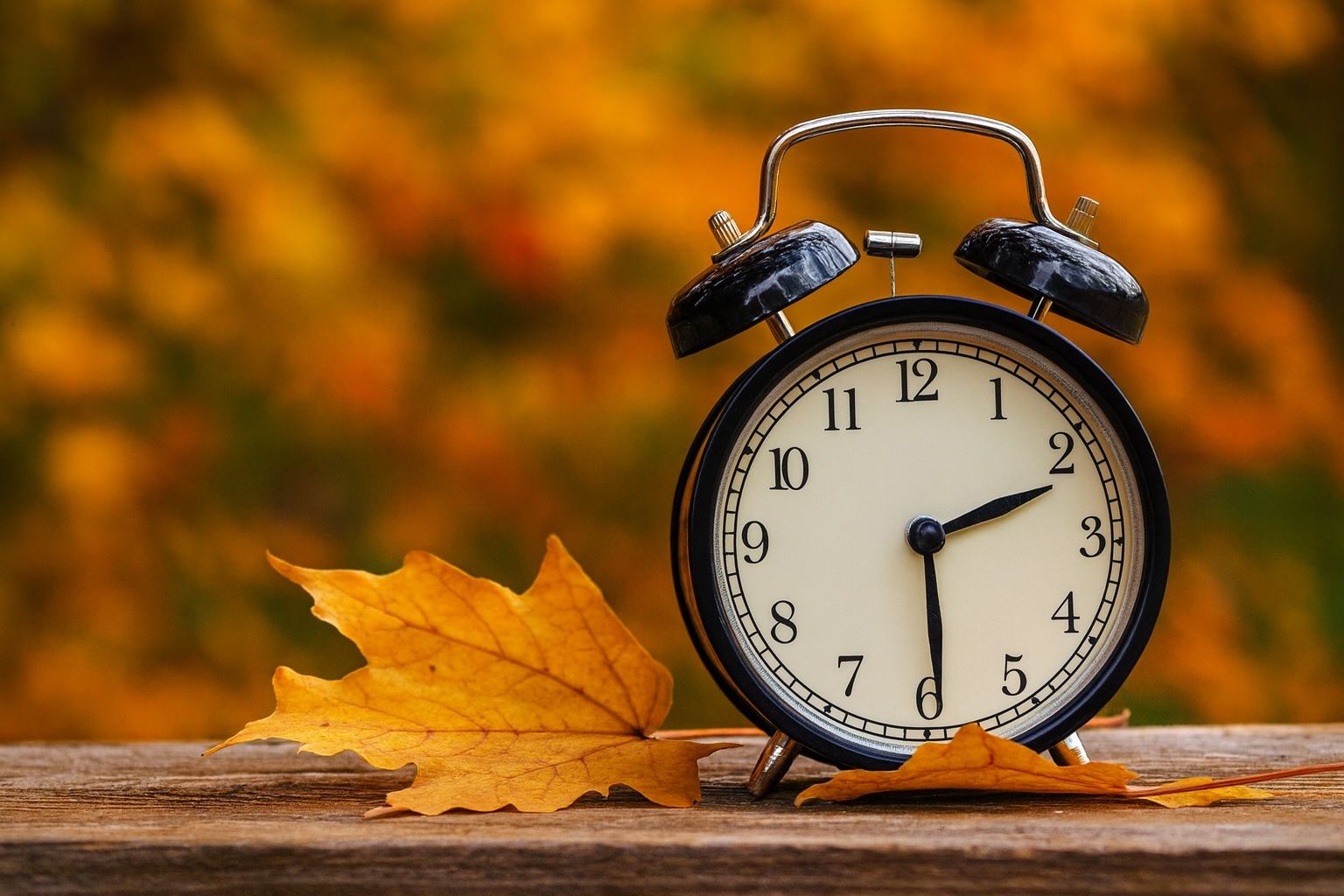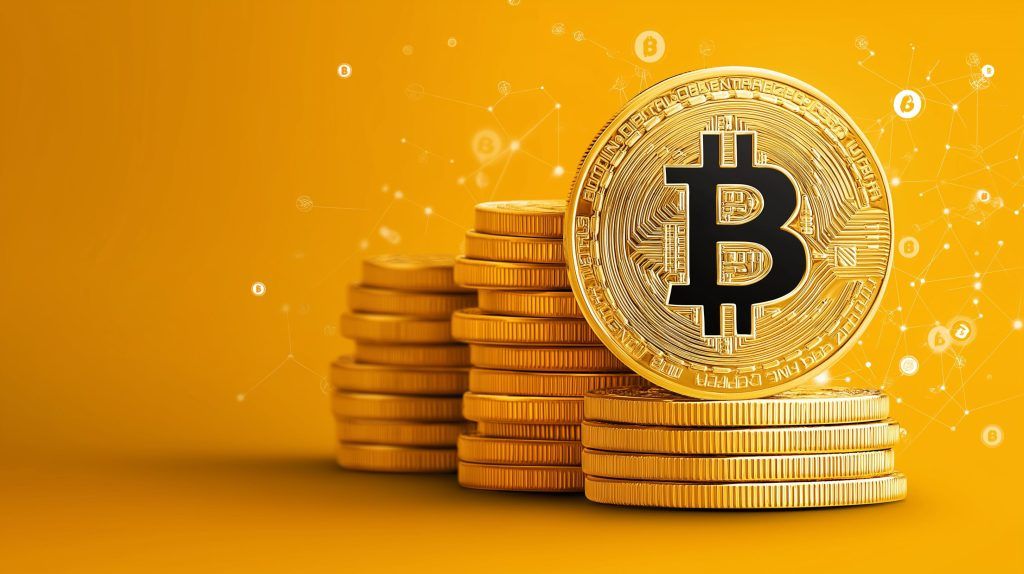- Clocks “fall back” on Nov. 2, 2025: Daylight Saving Time (DST) will end in the U.S. at 2:00 a.m. on Sunday, Nov. 2, 2025, when clocks are set back one hour [1]. Americans gain an extra hour of sleep as DST gives way to standard time for winter.
- No permanent change yet: Despite the U.S. Senate unanimously passing the Sunshine Protection Act in 2022 (a bill to make DST permanent year-round), the measure stalled in Congress and never became law [2]. That means the biannual clock-changing ritual continues in 2025, with no federal approval yet for a permanent time shift.
- Trump weighs in on ending DST: President Donald Trump has voiced support for ending the twice-yearly time changes, calling it “the easiest issue” to resolve – yet he notes it’s a “50/50 issue” among Americans, making it hard to build enthusiasm for one side [3]. Trump acknowledged many people love extra evening daylight while others prefer brighter mornings, leaving the nation evenly split on permanent DST versus permanent standard time.
- Health experts vs. daylight lovers: Medical experts warn that shifting clocks twice a year disrupts sleep and poses health risks. The American Academy of Sleep Medicine argues DST transitions harm circadian rhythms and public safety, urging a switch to permanent standard time aligned with natural light [4]. On the other hand, many business and economics observers favor permanent DST, claiming longer daylight in the evenings can improve public safety, boost retail activity, and even save energy – though evidence on energy savings is mixed [5] [6].
- Stocks feel the clock change: Even the stock market isn’t immune to clock-change chaos. Research shows that when we “spring forward” and lose an hour, sleep-deprived investors process financial news more slowly, leading to muted stock price reactions and higher trading volume as traders debate a stock’s true value [7]. One study found the S&P 500 index dropped an average ~0.3% on the first trading day after a DST switch, a notable departure from typical market patterns [8]. These effects are short-lived, but they underscore how “almost everywhere you look, the time change has an effect — even in the realm of capital markets” [9].
When Do We Change the Clocks in Fall 2025?
Mark your calendars: the end of DST is coming the first weekend of November. At 2:00 a.m. local time on Sunday, November 2, 2025, clocks will be turned back one hour across most of the United States [10]. This annual autumn ritual – “falling back” – returns the country to standard time for the winter months. Sunrise and sunset times will shift an hour earlier, bringing more early-morning light but darker evenings.
Not everyone has to fiddle with their clocks, however. Two states – Hawaii and most of Arizona – do not observe DST at all, so their clocks stay put in November. The same goes for U.S. territories like Puerto Rico, Guam, American Samoa, and the U.S. Virgin Islands, which remain on standard time year-round [11]. For the rest of America, though, November 2nd will mean brighter mornings (and sleepier, early sunsets) as we exit DST.
Why Are We Still Changing the Clocks?
If it feels like we’ve been debating an end to clock changes forever, that’s because we have. The twice-yearly time change has long been controversial. Daylight Saving Time was first adopted in the U.S. in 1918 as a wartime energy-saving measure and has been tweaked many times since [12]. The idea is to shift daylight into the evening hours during summer, supposedly to conserve energy and encourage commerce. But in modern times, experts argue DST doesn’t save much energy at all – for example, an official study in Mexico found DST cut electricity use by only 0.16% while bringing social and health drawbacks [13]. The practice endures mainly out of habit and inertia, even as public sentiment has shifted against the hassle of changing clocks.
In fact, public support for keeping DST has dropped sharply in recent decades. A Gallup poll found only 40% of Americans favor the DST clock-changing practice in 2025, down from 73% who supported it in 1999 [14] [15]. Over half of Americans (54%) say they’re ready to do away with clock changes entirely, according to the January 2025 Gallup survey. When pressed, about 48% said they would prefer permanent standard time year-round (accepting earlier sunsets in summer), while a minority favor year-round DST with later sunsets. This split in preferences – roughly half on each side – helps explain why change hasn’t come easy. As President Trump put it, “it’s a 50/50 issue”, with the country divided between those who love late daylight and those who crave light in the morning [16]. “If something is a 50/50 issue, it’s hard to get excited about it,” Trump noted, reflecting on the lack of consensus [17].
The Push to “Lock the Clock” – Stalled in Congress
Despite the public’s grumbling, ending the time-change requires action in Washington. Under the Uniform Time Act of 1966, states can opt out of DST entirely (as Hawaii and Arizona do), but they cannot adopt year-round DST without federal approval [18] [19]. In other words, a state can stick with standard time permanently on its own, but it can’t stay on DST all year unless Congress changes the law.
In 2022, it looked like that change might actually happen. The U.S. Senate unanimously passed the Sunshine Protection Act in March 2022, a bipartisan bill to make DST permanent nationwide (ending the clock switching) [20]. However, the bill stalled in the House of Representatives and never reached the President’s desk [21]. With that, the effort died on the vine that session. Lawmakers brought the idea back again – the Sunshine Protection Act was re-introduced in the new Congress in January 2025 – but so far it hasn’t gained traction [22]. As of fall 2025, no federal DST legislation has been enacted, and neither the House nor Senate has advanced the current bills out of committee [23].
This lack of progress at the federal level means the status quo prevails. “All signs point to continued twice-yearly clock changes,” one sleep research group concluded, noting that no U.S. law change was likely in time for this year’s fall-back switch [24]. Indeed, without a new law, Americans should expect to be changing their clocks again in March 2026 and beyond [25].
On the state level, there’s plenty of pent-up desire to stop the clock flips. At least 19 states have passed laws or resolutions in favor of permanent DST – essentially “lock the clock” measures – in recent years [26]. Florida, Washington, California, Oregon, and Tennessee are among states that have signaled they’d move to year-round DST if they could [27]. But none of those state laws can take effect without Congress first amending federal time law, so they remain symbolic for now. (States can choose permanent standard time without Congress, but few have pursued that route aside from the ones already not observing DST.) In 2023 and 2024, a number of additional states considered similar bills, but no new state laws passed in 2025 on this issue [28] [29].
What Does President Trump Say About DST?
The push to end clock changes got an extra jolt of attention from President Donald Trump, who has periodically chimed in on the issue. During his 2024 campaign and into 2025, Trump expressed support for doing away with the time shifts. In December 2024 (just before taking office), then-President-elect Trump even promised to eliminate daylight saving time, suggesting the U.S. would stop changing clocks under his watch [30].
Once in the White House, Trump acknowledged the complexity of choosing which time to stick with. At a March 2025 briefing, he lamented that ending DST should be “the easiest one of all” issues but noted “a lot of people like it one way, a lot of people like it the other way” [31]. He observed that roughly half the country would prefer year-round standard time (more morning light, earlier sunsets) and half want permanent DST (darker mornings, extended evening light) [32] [33]. Because opinion is so evenly split, Trump said, “it’s very even… usually I find where that’s the case, what else do we have to do?” – implying there are bigger battles to fight when there’s no clear public mandate [34].
While Trump signaled he wants to end the clock-changing (calling DST “inconvenient,” and a practice he’d gladly scrap), he also conceded he does not have unilateral authority to do so [35]. Legally, only Congress – or potentially the Secretary of Transportation via regulatory power – can make the call to lock the nation’s clocks. Trump’s Transportation Secretary and allies in Congress would have to work together on a policy change. So far, despite Trump’s supportive rhetoric, no swift executive action has materialized. The Sunshine Protection Act of 2025 remains in congressional limbo, and it’s unclear if the Trump administration will make a hard push to get it passed. For now, the President has mostly been “on the fence” publicly, characterizing DST reform as worthwhile but not a top-tier priority in the face of a 50/50 public split [36].
Health and Safety: Experts Urge Ending Clock Changes
One thing nearly all experts agree on: switching the clocks twice a year is disruptive, and many scientists and doctors would be thrilled to see the practice ended. But there’s sharp disagreement over which time (standard vs. daylight) should be adopted permanently.
Sleep scientists and public health experts overwhelmingly favor permanent standard time (winter time) rather than DST. Their reasoning: standard time more closely aligns with the sun’s natural schedule. Moving an hour of daylight from morning to evening (as DST does) can wreak havoc on our internal body clocks. The American Academy of Sleep Medicine (AASM) has been outspoken, warning that the DST shift leads to lost sleep, which in turn is linked to higher risks of heart attacks, strokes, car accidents and workplace injuries in the days following the switch [37]. The AASM formed a Coalition for Permanent Standard Time that in late 2023 went to Capitol Hill to present evidence on the health downsides of DST [38] [39]. In 2025, the sleep medicine community reiterated calls to “ditch DST” for good and stop forcing the human body to adjust to artificial time changes [40]. From their perspective, the healthiest choice is to never “spring forward” again, instead keeping winter standard time year-round so that morning light can support natural circadian rhythms [41].
On the other side of the debate, many business groups, economists and even crime experts tend to favor permanent DST (summer time year-round). Their argument centers on the benefits of having extra daylight in the late afternoon and evening. More light after work and school can mean more shopping and dining out, more recreation and exercise, and even reduced crime rates, according to various studies [42]. For example, advocates point to research suggesting that robbery rates drop with later sunsets (criminals prefer darkness), and retail sales and outdoor activity get a boost when people have daylight after 5 PM. Industries like golf, tourism, and barbecue grill manufacturers have historically lobbied for extended DST, believing it increases consumer spending. These proponents admit DST in winter would make winter mornings darker, but they argue the trade-off is worth it for the evening gains in safety and commerce [43].
Scientific studies have examined both scenarios – permanent standard vs permanent DST – and the findings are mixed. While permanent DST could give economic and social benefits (and is generally more popular in opinion polls [44]), permanent standard time would likely yield health and safety benefits (better sleep, fewer accidents). This split is exactly why Congress is torn. As one analysis noted, “most sleep scientists prefer permanent standard time, [while] many economists and business experts favor permanent daylight saving time” [45]. There’s no consensus even among experts, because it depends on whether you value natural health rhythms over late-day productivity and activity. Either way, nearly everyone agrees the switching itself is the worst part – ending the flip-flop clocks, in one direction or the other, would at least eliminate the jarring transitions that happen every March and November.
Does Daylight Saving Really Save Energy?
The original rationale for DST was to save energy – by adding an hour of evening daylight, people might use less electricity for lighting in the evenings. But in today’s world of air conditioning, electronics, and 24/7 lifestyles, many experts say that benefit has largely evaporated. Modern research casts doubt on DST’s energy savings [46]. When Mexico decided to abolish DST nationwide in 2022, its government cited an official study finding a mere 0.16% reduction in annual energy usage from DST – essentially negligible [47]. Likewise, U.S. studies have found that any electricity savings on summer evenings can be offset by higher energy use on dark mornings (people crank up heat, lights, etc.) [48]. The net energy impact of DST in today’s society appears to be close to zero, or even slightly negative in some regions.
Economically, DST’s impact is hard to pin down. Some analyses find modest boosts in consumer spending during longer-light evenings (people go out to shop or dine more when it’s daylight after work). But other research finds no clear long-term economic gains and notes potential downsides – for instance, worker productivity might dip in the days after a clock change due to tired employees. Any GDP or productivity effect from DST is likely very small, and experts say it’s more or less a wash when all factors are considered [49]. In short, DST is no economic panacea; society doesn’t grind to a halt without it, nor does it boom because of it. This undercuts one of the historical justifications for continuing DST.
Stock Market “Jet Lag”: How Clock Changes Affect Finance
An intriguing area of research has looked at how DST impacts the stock market and finance. It turns out that the hour of sleep lost (or gained) can ripple into investor behavior in measurable ways. Studies by finance professors have documented a phenomenon sometimes nicknamed the “DST effect” in markets. When we “spring forward” in March and everyone loses an hour of sleep, stock returns have been observed to dip more often than usual in the days after. One landmark study found that U.S. stock markets averaged a -0.3% return on the Monday after the spring DST transition, significantly worse than typical Mondays [50]. The theory is that collective sleepiness leads to more cautious or error-prone trading – essentially a mild market malaise.
More recent research goes further: investors seem to process information less efficiently right after a clock change. A 2024 study in The Accounting Review found that in the week following a spring DST shift, stock prices reacted more sluggishly to companies’ earnings announcements, indicating that even professional investors were slower to digest news when running on an hour less sleep [51]. The study noticed a “delayed or muted price response” to news in that post-DST week and an unusual surge in trading volume, suggesting confusion or disagreement on a stock’s value [52]. “Cognitive impairment due to sleep loss creates distortions in the market,” explained lead researcher Andrew Pierce – it causes markets to behave less efficiently for a few days [53] [54]. In plain terms, the whole market gets a tiny bit jet-lagged.
The good news is these effects are short-lived. Market patterns tend to revert to normal within a few trading days after the time change [55]. And the fall “back” switch (when we gain an hour) is generally thought to have a milder effect, or sometimes the opposite effect, as people get a small extra rest – though studies have mostly focused on the spring loss of sleep. Still, the fact that researchers can see a statistical blip at all underscores how far-reaching the impact of DST transitions can be. As one business school news article put it, “almost everywhere you look, the time change has an effect — even in the realm of capital markets” [56]. This has not gone unnoticed by lawmakers: those advocating to end DST often cite these studies as further evidence that the costs of clock switching (even subtle ones like jittery financial markets) outweigh any benefits [57].
From an investor’s perspective, the practical takeaway is to be aware of the “sleepy Monday” effect. Some analysts even playfully advise avoiding major market decisions on the Monday after DST, or double-checking that your broker’s trading algorithms are correctly adjusted to the new time. International traders must also contend with scheduling confusion – for instance, when the U.S. is on DST but Europe hasn’t switched yet (or vice versa), the usual New York/London trading hour overlap shifts by an hour [58]. Such mismatches can lead to temporary quirks in trading volumes [59]. All told, while DST won’t make or break the stock market, it adds yet another layer of complexity that both humans and algorithms have to adapt to. If we eventually abolish DST, nobody on Wall Street is likely to miss that extra headache.
Global Moves: Other Countries Ending DST
The United States is far from the only place rethinking daylight saving time. Worldwide, only about 70 countries (roughly one-third of all countries) still observe DST each year [60]. In the past decade, dozens of nations have decided to quit changing their clocks. For example, Russia, India, China, Japan and most countries near the equator don’t bother with DST at all (daylight hours don’t fluctuate much near the equator). And several places that used DST for decades have recently scrapped it: Argentina, Brazil, and South Korea all abolished DST in the 2000s–2010s.
A notable recent move came from Mexico, which abolished DST nationwide in 2022 (except for some towns near the U.S. border that stay aligned with U.S. time) [61]. Mexico’s government cited both minimal energy savings and health considerations in ending the practice. In the Middle East, Jordan and Syria both switched to permanent summer time (year-round DST) in 2022 [62], essentially “locking the clock” an hour ahead permanently. Paraguay decided in late 2024 to do the same – it will keep DST year-round going forward, eliminating the winter switch back [63]. These international examples show a trend: more regions are concluding the hassle of changing clocks isn’t worth it.
And what about Europe? The European Union came close to ending seasonal clock changes a few years ago. In 2018, after an EU-wide survey showed strong support for scrapping DST, the European Parliament voted to recommend ending the clock changes by 2021. Each member country would choose either permanent standard or permanent summer time. However, the plan got bogged down amid debates and the pandemic, and as of 2025, Europe is still changing clocks twice a year [64]. The proposal remains in limbo, waiting for coordination among member states. So Europeans will “fall back” on the last Sunday of October as usual – that’s Oct. 26, 2025 – and much of the world will watch to see if the EU ever revisits the issue [65] [66].
Notably, Britain (which is no longer in the EU) also continues to observe DST (known there as “British Summer Time”), moving in sync with Europe’s schedule for now [67]. If the EU does eventually stop the clock switches, the UK would face a choice whether to follow suit or end up an hour out of sync with the continent for half the year. For the time being, though, the global map of time change is a patchwork: some regions have given it up, others stick with it, often for cultural or political reasons.
Outlook: Is This the Last “Fall Back”?
So, will November 2025 be the last time Americans ever change their clocks? The short answer: probably not. While momentum has built in recent years to “lock the clock,” and politicians from both parties (and even presidents) have voiced support, the final step keeps getting delayed. “By most accounts, a change … is unlikely anytime soon,” one sleep policy analysis concluded, given ongoing disagreements in Congress [68]. There is still no clear consensus on which time to lock in, and that has hampered legislative progress. Without an extraordinary push in Washington, it’s expected that Americans will continue the spring forward/fall back ritual in 2026 and the near future [69].
However, public pressure is steadily rising, and more data on DST’s downsides – from health hazards to economic inefficiencies – is piling up. States are chomping at the bit for federal approval to enact the will of their residents who’ve said “enough” to clock changes. Experts predict it’s only a matter of time (no pun intended) before the U.S. joins the growing list of places that have abolished the clock switch. Whether we end up on permanent DST or permanent standard time is the million-dollar question. For now, as you enjoy that extra hour of sleep on November 2, 2025, know that the clock-change debate is very much alive. Each “fall back” could be bringing us closer to a future where we stop changing the clocks for good – but that future isn’t here just yet. Until Congress acts, don’t forget to change your clocks and brace for a bit of “social jet lag” each spring and fall [70].
Sources: Recent news and expert analyses on Daylight Saving Time from Providence Journal, Courier Journal, USA Today, tech and policy commentary from TechStock² (ts2.tech) [71] [72], sleep science insights from the Sleep Foundation [73] [74], statements from FOX 5 DC / LiveNOW (Gallup poll, Trump remarks) [75], and academic findings on market impacts from Georgia State University and financial experts [76] [77].
References
1. www.courier-journal.com, 2. www.courier-journal.com, 3. www.fox5dc.com, 4. ts2.tech, 5. www.sleepfoundation.org, 6. ts2.tech, 7. news.gsu.edu, 8. www.trade-ideas.com, 9. news.gsu.edu, 10. www.courier-journal.com, 11. www.fox5dc.com, 12. www.sleepfoundation.org, 13. ts2.tech, 14. www.livenowfox.com, 15. www.livenowfox.com, 16. www.fox5dc.com, 17. www.fox5dc.com, 18. www.sleepfoundation.org, 19. www.sleepfoundation.org, 20. www.courier-journal.com, 21. www.courier-journal.com, 22. www.sleepfoundation.org, 23. www.sleepfoundation.org, 24. www.sleepfoundation.org, 25. www.sleepfoundation.org, 26. ts2.tech, 27. ts2.tech, 28. www.sleepfoundation.org, 29. www.sleepfoundation.org, 30. www.livenowfox.com, 31. www.fox5dc.com, 32. www.fox5dc.com, 33. www.fox5dc.com, 34. www.fox5dc.com, 35. www.fox5dc.com, 36. www.fox5dc.com, 37. ts2.tech, 38. www.sleepfoundation.org, 39. www.sleepfoundation.org, 40. www.sleepfoundation.org, 41. www.sleepfoundation.org, 42. www.sleepfoundation.org, 43. www.sleepfoundation.org, 44. www.sleepfoundation.org, 45. www.sleepfoundation.org, 46. ts2.tech, 47. ts2.tech, 48. ts2.tech, 49. ts2.tech, 50. www.trade-ideas.com, 51. news.gsu.edu, 52. news.gsu.edu, 53. news.gsu.edu, 54. news.gsu.edu, 55. www.trade-ideas.com, 56. news.gsu.edu, 57. news.gsu.edu, 58. www.stocktitan.net, 59. www.stocktitan.net, 60. ts2.tech, 61. ts2.tech, 62. ts2.tech, 63. ts2.tech, 64. ts2.tech, 65. ts2.tech, 66. ts2.tech, 67. ts2.tech, 68. www.sleepfoundation.org, 69. www.sleepfoundation.org, 70. news.gsu.edu, 71. ts2.tech, 72. ts2.tech, 73. www.sleepfoundation.org, 74. www.sleepfoundation.org, 75. www.fox5dc.com, 76. news.gsu.edu, 77. www.trade-ideas.com







